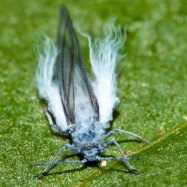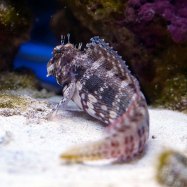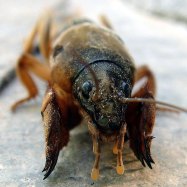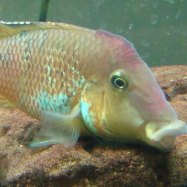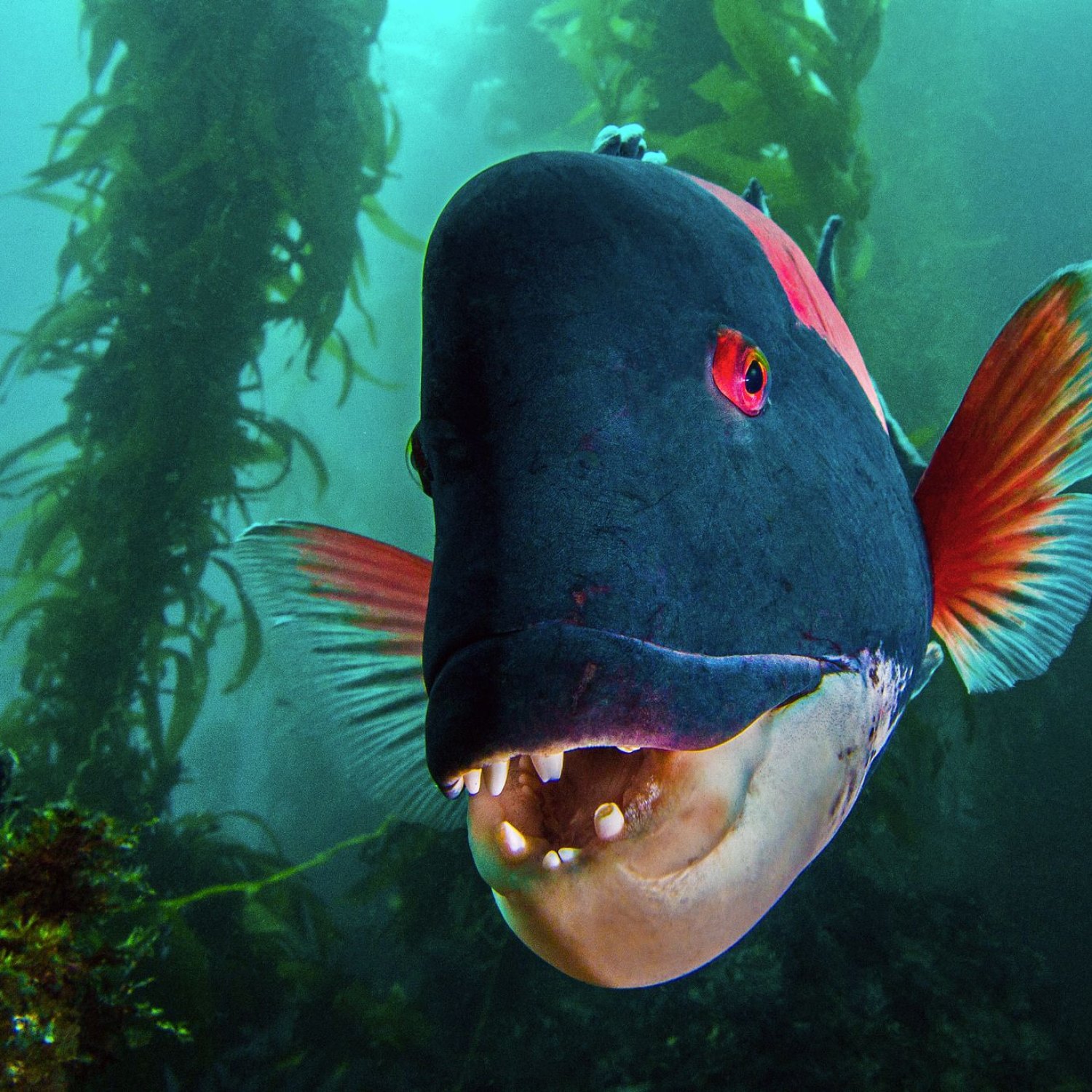
Sheepshead Fish
Typically grows up to 20 inches, but can reach up to 30 inches
The Sheepshead Fish is a popular catch for both recreational and commercial fishermen. With its distinct striped pattern and flat, sheep-like teeth, this fish is an interesting sight in the Atlantic Ocean and Gulf of Mexico. It can grow up to 20 inches, but some have been known to reach 30 inches. Belonging to the Sparidae family, its body shape is compressed and deep-bodied, making it a unique addition to any fisherman's collection. #SheepsheadFish #AtlanticOcean #GulfofMexico #Sparidae #Fishing
Animal Details Summary:
Common Name: Sheepshead Fish
Kingdom: Animalia
Habitat: Coastal waters, estuaries, and reefs
The Mysteries of the Sheepshead Fish: A Unique Creature of the Atlantic Ocean
The vast Atlantic Ocean is home to countless unique creatures, many of which we have yet to fully explore and understand. Among these intriguing animals is the Sheepshead fish, a species that has captivated the curiosity of fishermen, researchers, and nature enthusiasts alike. With its distinct appearance, feeding habits, and distribution, the Sheepshead fish is an entity that deserves to be studied and admired. In this article, we will delve deeper into the mysteries of the Sheepshead fish, uncovering its scientific name, common name, habitat, feeding method, geographical distribution, and more Sheepshead Fish.The Scientific Name and Common Name of the Sheepshead Fish
The Sheepshead fish, also known as Archosargus probatocephalus, belongs to the Kingdom Animalia, Phylum Chordata, and Class Actinopterygii. Its scientific name is derived from the Greek words "archos" meaning ruler, and "sargos" meaning silver fish, highlighting the species' silver coloration. The term "probatocephalus" translates to "sheep's head," which is appropriate given the appearance of this unique fish.The common name of the Sheepshead fish is also derived from its physical characteristics, with its mouth resembling that of a sheep. This feature, along with its vertical black stripes, makes it easily identifiable and has contributed to its popularity among fishermen and seafood enthusiasts.
The Sheepshead Fish and Its Environment
The Sheepshead fish can be found in coastal waters, estuaries, and reefs, making it a versatile species that can thrive in various environments. Its distribution ranges from North America, stretching from Nova Scotia to Brazil. The Sheepshead fish is predominantly found in the United States, with the majority of its population found in the Atlantic Ocean and the Gulf of Mexico.Due to its preference for coastal and estuarine habitats, the Sheepshead fish can often be found near structures such as piers, bridges, and jetties Sparrowhawk. This is because these structures provide a source of shelter and food, as they are often covered with barnacles, mussels, and other invertebrates that the Sheepshead fish feeds on.
The Feeding Habits of the Sheepshead Fish
One of the most intriguing aspects of the Sheepshead fish is its feeding method. Unlike many other fish species, the Sheepshead fish is an omnivore, meaning that it consumes both plant matter and animals in its diet. This is unusual for a fish, as most are either herbivores or carnivores.The Sheepshead fish has a distinct set of teeth that are essential for its feeding habits. These teeth are strong, flat, and rounded, allowing the fish to crush shells and crustaceans with ease. This ability to consume hard-shelled prey is what makes the Sheepshead fish a pest to many fishermen, as it can quickly deplete populations of oysters, clams, and crabs.
While crustaceans and invertebrates make up most of its diet, the Sheepshead fish also consumes algae, seagrass, and other plant matter. Its omnivorous diet is vital to maintaining a healthy ecosystem, as it helps control the population of various species and contributes to the overall balance and biodiversity of the marine environment.
The Mysteries of the Sheepshead Fish's Appearance
The Sheepshead fish boasts a striking physical appearance, with its silver body and black stripes earning it the nickname "convict fish." This coloration serves as camouflage, allowing the fish to blend in with its surroundings and avoid detection from predators.Aside from its coloration, the Sheepshead fish has a distinct body shape, with a compressed and deep-bodied structure. This shape allows it to maneuver easily through the water and also contributes to its ability to crush hard shells.
The Sheepshead fish typically grows up to 20 inches in length, but it's not uncommon for them to reach up to 30 inches. Interestingly, this species has the ability to change its sex throughout its lifetime, with females transitioning to males as they grow larger.
Influence of the Sheepshead Fish in Human Culture
Despite its unique attributes, the Sheepshead fish has not received a lot of attention in human culture. However, it has become a staple in local fishing communities, with its meat being considered a delicacy among seafood enthusiasts.Sheepshead fish have also been featured in various fishing tournaments and have become a popular target for recreational fishermen. Its strong and stubborn nature adds an element of adventure and challenge to those who pursue this elusive creature.
The Sheepshead Fish and its Significance in NLP
With the advancement of technology and the increased use of Natural Language Processing (NLP), the Sheepshead fish can also be observed in this field. As an omnivore, the Sheepshead fish is a vital part of the aquatic ecosystem and plays a significant role in maintaining balance and biodiversity. In NLP, this concept of balance and diversity is crucial in creating models and algorithms that yield accurate and unbiased results.Just as the Sheepshead fish consumes both plant matter and animal prey, NLP aims to consider and analyze various perspectives and inputs to provide a comprehensive and unbiased outcome. The Sheepshead fish serves as a reminder of the importance of diversity and balance in both nature and technology.
Threats to the Sheepshead Fish Population
While the Sheepshead fish plays a significant role in its ecosystem, it is also facing various threats that could potentially impact its population. One of the major threats comes from human activity, namely overfishing and habitat destruction.The Sheepshead fish is often targeted by recreational fishermen, leading to a decline in its population. In some areas, it is also considered a nuisance fish and is often killed by humans due to its feeding habits. This, coupled with habitat loss and pollution, could have severe consequences for the Sheepshead fish's population if not addressed and regulated properly.
In Conclusion
In conclusion, the Sheepshead fish is a unique and fascinating creature found in the Atlantic Ocean and the Gulf of Mexico. Its distinct appearance, feeding habits, and importance in its ecosystem make it an entity that deserves to be studied and protected.As we continue to unveil the mysteries of the ocean and all its inhabitants, the Sheepshead fish remains a reminder of the wonders and complexities of nature. Through proper conservation efforts and responsible fishing practices, we can ensure that future generations will also have the opportunity to admire and appreciate this remarkable species.

Sheepshead Fish
Animal Details Sheepshead Fish - Scientific Name: Archosargus probatocephalus
- Category: Animals S
- Scientific Name: Archosargus probatocephalus
- Common Name: Sheepshead Fish
- Kingdom: Animalia
- Phylum: Chordata
- Class: Actinopterygii
- Order: Perciformes
- Family: Sparidae
- Habitat: Coastal waters, estuaries, and reefs
- Feeding Method: Omnivorous
- Geographical Distribution: North America, ranging from Nova Scotia to Brazil
- Country of Origin: United States
- Location: Atlantic Ocean and Gulf of Mexico
- Animal Coloration: Silver in color with vertical black stripes on their body
- Body Shape: Compressed and deep-bodied
- Length: Typically grows up to 20 inches, but can reach up to 30 inches
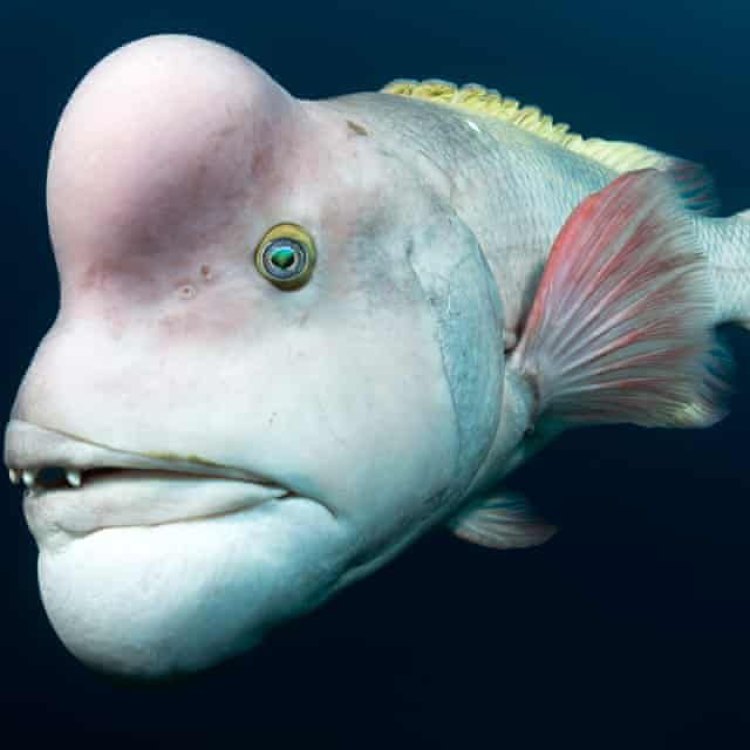
Sheepshead Fish
- Adult Size: 20-30 inches
- Average Lifespan: 10-20 years
- Reproduction: Sexual
- Reproductive Behavior: Spawning occurs from April to August
- Sound or Call: Unknown
- Migration Pattern: Migratory fish
- Social Groups: Solitary or in small groups
- Behavior: They are known for their strong teeth and ability to crush shellfish
- Threats: Overfishing and habitat destruction
- Conservation Status: Not listed as threatened or endangered
- Impact on Ecosystem: Important role in maintaining balance in marine ecosystems
- Human Use: Commercial and recreational fishing
- Distinctive Features: Prominent black stripes and human-like teeth
- Interesting Facts: They have a reputation for stealing bait from fishermen
- Predator: Sharks and larger predatory fish
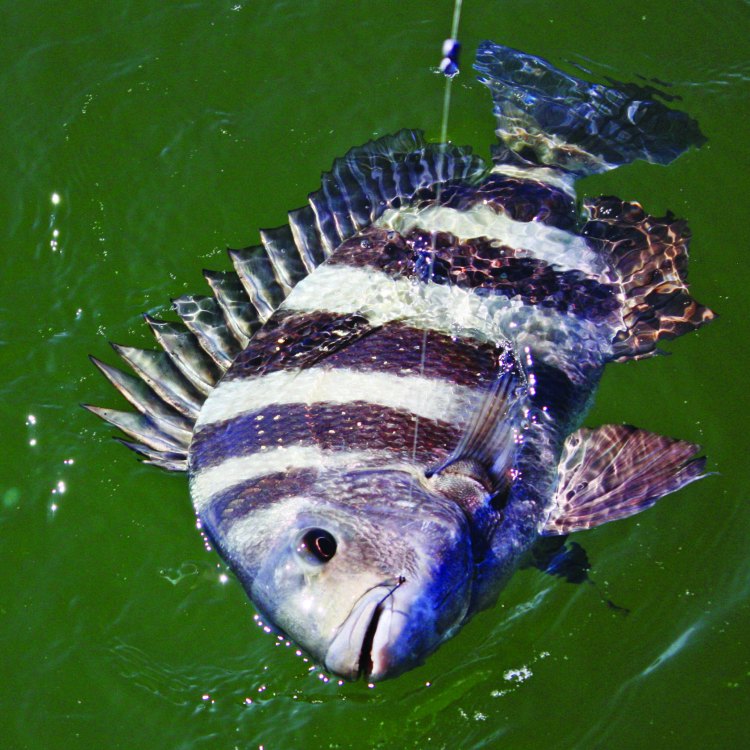
Archosargus probatocephalus
The Unique Features and Importance of Sheepshead Fish: A Fascinating Look at the Underwater World
The ocean is full of diverse and fascinating creatures, one of which is the Sheepshead fish. With its distinctive black stripes and human-like teeth, this fish has captured the attention of many. But beyond its unique appearance, the Sheepshead fish also plays a crucial role in maintaining balance in marine ecosystems. In this article, we will dive deep into the world of Sheepshead fish, exploring its features, behavior, and importance PeaceOfAnimals.Com.A Peek into the Sheepshead Fish’s Characteristics
The Sheepshead fish (Archosargus probatocephalus) is a species of marine fish found in the western Atlantic Ocean, from Nova Scotia to Brazil. This fish is a member of the Sparidae family, which includes other popular food fish such as sea bream and porgy.One of the most striking features of Sheepshead fish is their appearance. They have a deep and compressed body, with prominent black stripes running vertically along their sides. These stripes are the reason for their name, as they resemble the full set of teeth of a domesticated sheep. They also have a large, bulky head with a protruding forehead and small fins. This fish can reach an adult size of 20-30 inches, weighing up to 20 pounds, making it one of the larger fish in its family.
The Life of a Sheepshead Fish
Sheepshead fish have an average lifespan of 10-20 years, and they reach maturity at around 2-3 years old. They are a sexual species, with females producing eggs and males releasing sperm into the water for fertilization San Francisco Garter Snake. Spawning occurs from April to August, where they gather in large groups near the coast.When it comes to their reproductive behavior, Sheepshead fish are known for their elaborate courtship rituals. The male fish will use their snouts to dig out circular nest depressions in the sand, while females will choose the most suitable nest for their eggs. After spawning, the female fish will leave the nest to the male fish, who will guard and protect the eggs until they hatch.
The Enigmatic Sound or Call of Sheepshead Fish
While many underwater creatures use sound or calls to communicate, the Sheepshead fish remains one of the few species with an unknown vocalization. Researchers have not yet recorded or identified any sounds made by this fish, leaving scientists intrigued and puzzled by this mystery.The Migratory Patterns of Sheepshead Fish
Sheepshead fish are migratory fish, meaning they travel to different locations throughout the year in search of food and suitable environments. In the warmer months, they migrate closer to the coast to spawn, while in colder months, they move to deeper, warmer waters.However, the migration patterns of Sheepshead fish have changed in recent years due to environmental factors such as climate change and human interference. Pollution and habitat destruction have caused disruptions in their usual migratory routes, leading to a decline in their populations.
The Social Behavior of Sheepshead Fish
When it comes to their social behavior, Sheepshead fish are known to be solitary or in small groups. They are not highly social fish and are often found swimming alone or with just a few others. However, during spawning season, they gather in large groups to reproduce.The Fascinating Behavior of Sheepshead Fish
Sheepshead fish are known for their strong teeth and ability to crush shellfish. They have a set of incisors at the front of their mouth that resemble human teeth, and their molars at the back have a unique shape that allows them to crush hard-shelled prey like clams, oysters, and mussels. This behavior earned them the nickname “convict fish” or “denture fish.”But beyond their impressive dental abilities, Sheepshead fish also have a reputation for stealing bait from fishermen. They are intelligent creatures that have mastered the art of snatching bait right off the hook, leaving anglers frustrated and amazed at their thievery.
The Threats Facing Sheepshead Fish
Unfortunately, like many other marine species, Sheepshead fish face various threats that endanger their population. Overfishing is the biggest threat to these fish, as they are a highly sought-after food fish. Their slow growth and late reproductive age make them vulnerable to over-exploitation, leading to a decline in their populations.Habitat destruction is another significant threat to Sheepshead fish. With increasing coastal development, their nesting and spawning sites are being destroyed, leaving them with limited areas to reproduce. This disruption in their breeding process has a direct impact on their population growth.
The Conservation Status and Role in Ecosystems
Despite the threats they face, Sheepshead fish are not currently listed as threatened or endangered. However, the decline in their numbers raises concern about their conservation status.These fish play an essential role in maintaining balance in marine ecosystems. As bottom-feeders, they help control the population of small invertebrates and mollusks, which can become overpopulated without proper predators. This, in turn, affects the health and sustainability of the entire ecosystem. Therefore, preserving the population of Sheepshead fish is crucial in maintaining a healthy marine ecosystem.
The Human Use of Sheepshead Fish
Sheepshead fish are not only important for the ecosystem but also have value to humans. They are a popular commercial and recreational fish, sought after for their firm and flavorful meat. In some regions, they are also used as bait to catch other popular fish species.However, it is essential to practice responsible fishing methods to prevent overexploitation of Sheepshead fish. This can include adhering to fishing regulations, using appropriate gear to target specific species, and practicing catch and release methods.
The Unique Features and Predators of Sheepshead Fish
Sheepshead fish have several unique features that make them stand out in the underwater world. Their prominent black stripes and human-like teeth make them easily recognizable. These features also serve as a defense mechanism against predators, making them less appealing as prey.But like all living creatures, Sheepshead fish also have natural predators. Their main predators include sharks and larger predatory fish such as grouper and snapper. As they are not the fastest or most agile swimmers, they rely on their appearance and ability to camouflage themselves within their environment to avoid being caught.
Conclusion
In conclusion, the Sheepshead fish is a fascinating and unique creature that plays a crucial role in marine ecosystems. With their striking appearance, behavior, and importance, it is no wonder that they have captured the curiosity of many. However, it is essential to ensure the conservation and sustainable use of these fish to preserve their population and maintain a healthy ocean environment. So, let us continue to appreciate and admire the beauty and importance of the Sheepshead fish in the underwater world.
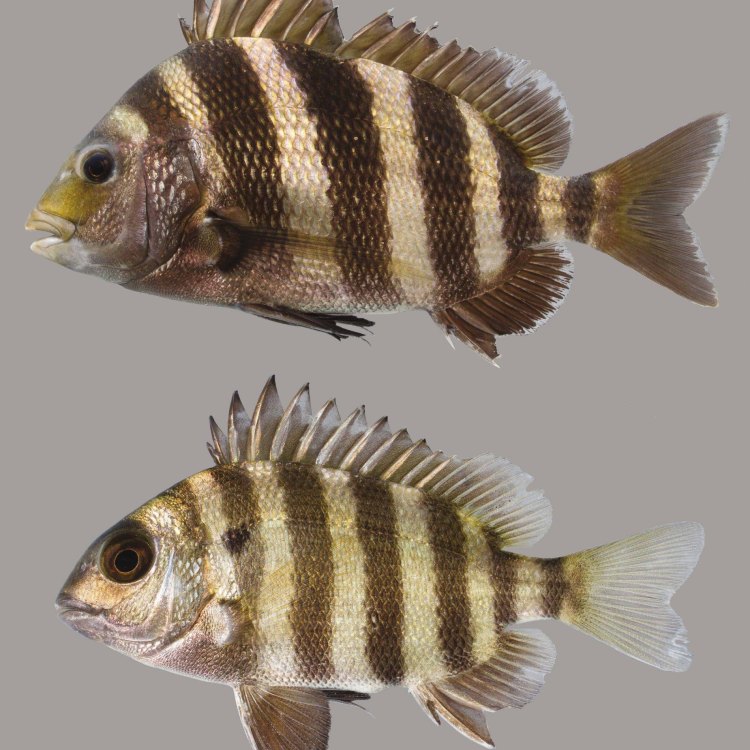
The Mysteries of the Sheepshead Fish: A Unique Creature of the Atlantic Ocean
Disclaimer: The content provided is for informational purposes only. We cannot guarantee the accuracy of the information on this page 100%. All information provided here may change without prior notice.

